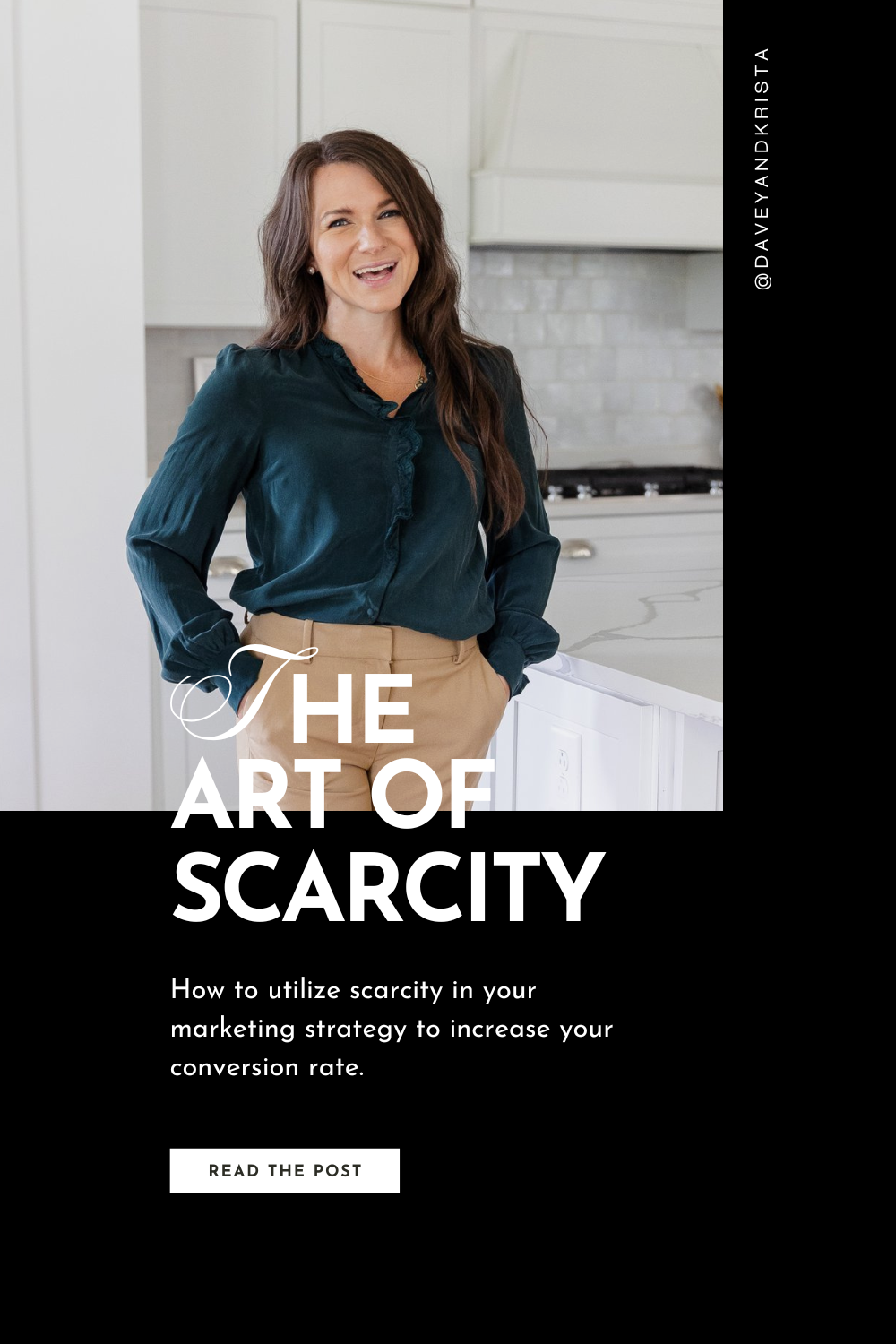What does Wilson’s Airless Gen 1 Basketball have to do with your marketing strategy?
Scarcity.
Wilson Sporting Goods recently released a Limited Edition, airless 3D-printed basketball, available with a personalized leather tag. This basketball costs more than ten times the price of Wilson’s normal NBA game ball–$2,500. But, even at $2,500 per basketball, the Airless Gen 1 quickly sold out in every color.
In this blog post, we’ll explore one of the marketing techniques Wilson used to successfully launch their new product: the art of scarcity. We’re also going to walk you through a few ways you can successfully utilize scarcity to increase client conversions.
Table of Contents
Let’s dive in…
What is the Art of Scarcity?
No doubt you’ve heard the term: Supply and Demand. It’s an economic principle that drives the price of a product or service. When the supply is the same as the demand, the market is balanced. In other words, it is at market equilibrium.
The art of scarcity is a marketing technique that disrupts this equilibrium. By making a supply feel “scarce” or limited, one can create a greater demand. This in turn can increase the success of conversion rates.
Marketing that properly implements the art of scarcity, can increase the perceived value of a product and encourage customers to take action.
Let’s look at a few examples.
What does Scarcity Look Like in Marketing?
Wilson Sporting Goods marketed their Airless 3D-printed Basketball as a “Limited Edition” product. They also elevated their product with personalization: “Each Airless Gen1 comes with a case, stand, and 3-letter customizable tag.” By doing both of these things, they made their product feel like a novelty, a rarity.
Let’s look at another example.
Stanley’s pink Valentine’s Day cups.
Stanley recently released a new color “Winter Pink” in collaboration with Starbucks. Not only was this a limited-edition product, but they sold the cup exclusively at Target.
By regulating the color, collaboration, and location (and marketing these regulations), Stanley increased the hype, or demand, for their new product. Was it successful?
Very. TIME magazine wrote, “A limited-edition Stanley stainless steel tumbler has caused mayhem at Target stores across the U.S., as buyers rush to get the cups.”
Need another example? Take a walk down Montague Street in Brooklyn, New York, and stop by L’Appartement 4F. This husband and wife duo went viral with their mini croissant cereal. It’s sold in limited supply—only a few boxes each morning. The cereal is also only available in person so anyone hoping to try this wonder cereal must wait in line outside the bakery.
Word quickly spread! Think Willy Wonka and the Golden Ticket: limited supply makes the prize feel elite.
How much does each box of mini croissant cereal cost? $50. The hashtag for #croissantcereal has more than 13 million views on TikTok, according to The NY Post.
Ladies and gentlemen, the art of scarcity.
Follow Scarcity Best Practices Responsibly
Before we continue, it is important to note that misapplying the scarcity principle can quickly destroy customer trust and harm your brand. The scarcity you create, or the limits you apply, should always be based on truth. For example, do not say a product is only available at one location and then sell it elsewhere too.
Do not break trust. The Art of Scarcity can be helpful in marketing but only when it is applied appropriately. This is why it’s so important to know your audience.
With that said, let’s discuss how the art of scarcity can be beneficial to your marketing.
Benefits of Utilizing the Art of Scarcity
Scarcity can be a versatile marketing tool, and if used properly it can enhance your customer connection and increase your conversion rate. Here are four reasons you may want to consider weaving the art of scarcity throughout your marketing strategy:
1. Increased Engagement
No one wants to miss out on an exclusive deal or rare opportunity. Because of this, product scarcity can cause customers to engage with social platforms more. Rather than tuning out, they’ll read the newsletter to simply stay “in the know” or sign up for text messages to catch the deal first.
2. Higher Brand Awareness
Incorporating scarcity into your marketing can also help you stand out against competitors. By creating unique and engaging marketing strategies, you’ll gain a competitive edge in saturated markets. Your brand will become recognizable like Wilson, Stanley, and L’Appartement 4F.
3. Deeper Customer Loyalty
Higher brand awareness as a result of scarcity, can also improve customer loyalty. Develop a sense of exclusivity and you will develop an emotional connection with your customers. You’ll cultivate a dedicated following.
4. Elevated Conversion Rate
Scarcity creates urgency, which can lead to higher click-through rates. People will take advantage of the opportunity at hand, especially if that opportunity is only on the table for a short while.
Many of these benefits intertwine with each other, connecting both the customer and the company. Yes, if overused or used improperly, the art of scarcity can break trust. But if it is stewarded well, scarcity can be a versatile marketing tool.
9 Ways to Use Scarcity in Your Marketing
Krista and I have implemented the art of scarcity in our marketing in a variety of ways over the years. Here are 8 ways you may find scarcity to be beneficial for business and helpful for growing connection with your audience:
1. Low Stock Supply
Limiting the number of products or services offered can create a feeling of scarcity and entice customers to take advantage of the opportunity before supply runs out. This tool will incorporate phrases like “while supplies last” and “only 1 left” in the marketing. We’re willing to bet that you’ve seen this on sites like Amazon.
2. Exclusive Benefits
A fun way to incorporate scarcity into your marketing is by brainstorming creative ways to make your product extra special. For all of our website templates, we provide access to an exclusive FB group where website resources and design help are always available. Providing added benefits to the product makes it more valuable for our clients and further develops connections.
3. Clock Reminders
Adding countdown timers to your website, newsletters, and social media can create a subtle touch of urgency. Timers serve as a friendly reminder to “Take advantage of this opportunity before it’s too late.” When Krista and I have an important sale, we’ll often add timers to our home page along with the promo code.
4. Early Access Deals
This scarcity tool encourages followers to “Get on the List” so they’re the first to be in the know about a product or service. It is an excellent way to simultaneously grow your email list.
Related: How to Get Your First 1000 Email Subscribers
5. Cart Reminder
Try utilizing an Exit Intent pop-up when a user is about to exit a page. It’s a friendly reminder to finish the task at hand before leaving. Often a cart reminder will say something like, “Hurry! We’ll only hold your cart items for the next 2 hours.”
6. Platform Exclusive Products
This is a fun way to increase engagement on a particular platform. Just like Stanley making their Winter Pink cups only available at Target stores, launching your product to be exclusively available through a texting link or email link can create excitement.
7. Social Proof pop-ups
Sharing social proof is a powerful tool and can encourage people to join in with other customers. Usually, the text will read something to the extent of “Sally G. just purchased x too!” The purpose of this pop-up is to provide reassurance that others are taking advantage of this deal too.
Related: Our Favorite Types of Pop-Ups
8. Seasonal Drops
Take advantage of the holidays and seasons. Think Starbucks’ Pumpkin Spice Lattes—by limiting the availability to a particular set of weeks in a year, you increase the perceived value. This also provides an opportunity to get creative and find witty ways to play on seasonal trends.
9. Urgency in Copy
This scarcity tool is much more subtle than the prior ones but is no less impactful. Sometimes scarcity best serves as a mindset shift in how you write your marketing copy. Incorporating words that set boundaries or demonstrate exclusivity can have a strong impact on your conversion rate.
Related: 11 Ways to Make Your Copy More Persuasive
Conclusion
Applying the art of scarcity to your marketing strategy can create vast opportunities for your business. This versatile marketing tool can enhance your customer connection and increase your conversion rate, but only if it is used properly. Misuse or abuse scarcity, and you’ll destroy your brand integrity and customer trust. Utilize it with caution and creativity, and you’ll find your client conversions on a steady incline.








VIEW THE COMMENTS
Add A Comment